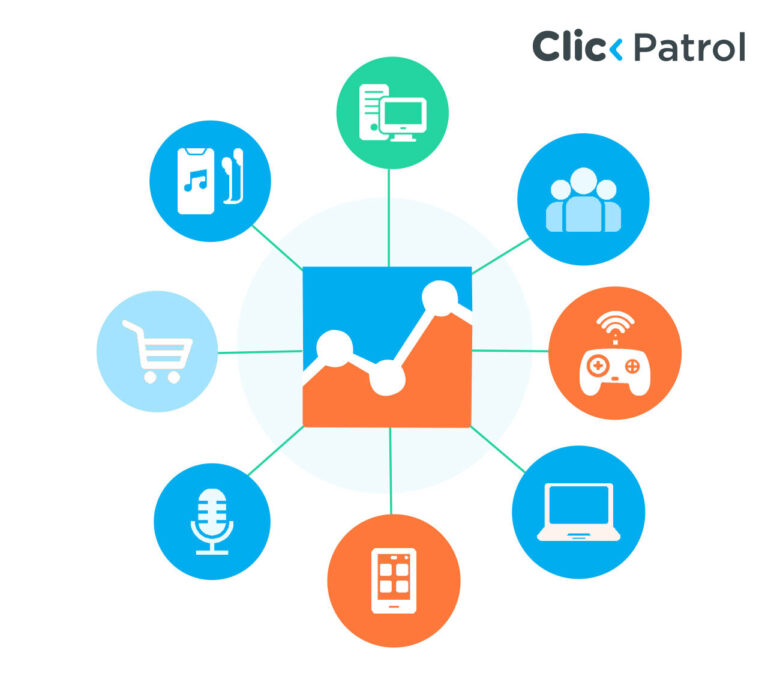
The Best Bot Protection For Google Display Campaigns
Abisola Tanzako | Aug 29, 2024

Table of Contents
A common question marketers as is this: Is Bot Protection For Google Display Campaigns neceesary?
For marketers, invalid traffic is a major concern. This kind of traffic is driven mainly by click fraud, which happens when malicious software, bots, or rival websites make invalid or unauthorized clicks. Clickjacking, spamming, click injections and click bots are just a few methods to commit click fraud. To prevent ad fraud, it is critical to comprehend the many kinds of ad fraud that you face.
One of the various tools scammers use to take advantage of pay-per-click (PPC) campaigns is click bots. However, as click bots get more advanced, they also target other ad campaigns with distinct revenue strategies. This article will explain how to detect and prevent bot attacks on your ad account.
What are clickbots?
Click bots are a special kind of bot created with a single purpose: clicking on appealing links. For instance, click bots are designed to click on PPC advertisements as part of the PPC advertising structure. These automated and brilliant bots are becoming increasingly proficient at performing repetitive jobs quickly. The most sophisticated click bots may imitate subtle aspects of human behavior, such as pausing, lingering on a webpage, and utilizing certain mouse motions to avoid being detected.
Furthermore, click bots function inside botnets, networks of thousands of machines with various IP addresses, instead of merely utilizing one device, which would immediately raise suspicions.
Difference between good bots and bad bots
Although the term “bot” sometimes carries a bad connotation, there are good bots on the internet. Furthermore, it is important to distinguish between good and bad bots because they frequently share many traits.
1. Good bots
Good click bots benefit businesses and marketers, allowing you to automate and expedite several repetitive tasks. For instance:
Good bots can click each link in an email before it reaches its recipients, shielding them from malicious or spam content.
Good bots can keep an eye on websites by visiting every link that has been published to ensure that it is working.
2. Bad bots
Ad campaigns can be destroyed by bad bots, which do not benefit marketers or businesses. These bots can carry out more complex tasks by meticulously mimicking human behavior. For instance:
- Bad bots can click your paid advertising.
- Bad click bots can browse the website, add items and shopping carts, complete forms and downloads, and click links.
- Bot networks can infect consumer devices and exploit them to perform fraudulent clicks at a high rate.
Today, bots are so sophisticated that most of their activity is unreported by the average marketer or advertiser. Hence, clickbots pose a serious risk to your advertising spending and, consequently, the effectiveness of your campaigns.
How do click bots work On Google Display
Let’s examine the methods scammers can use bots to carry out ad fraud.
- Fraudsters put click bots on a data center, computer server, or device.
- After that, they run advertisements on subpar websites and applications.
- Next, the bots click on as many landing sites and advertisements as possible. They can easily and swiftly accumulate thousands of clicks within a short period. This costs advertisers a lot of money who think they are paying for genuine clicks.
- Fraudsters subsequently collect the money paid for the sponsored ad clicks.
Who is behind bad bots?
Bots are easy to use. Anyone with some experience in coding may easily design and operate a bot. 40% of all internet traffic is generated by bots, which makes them one of the most prevalent forms of ad fraud.
1. Publishers and affiliates of your ads
Click bots are a tool that affiliates and ad publishers use to enhance traffic and revenue. They do this to get paid when someone clicks on the advertisements. This is typical of PPC revenue model advertisements. The more sophisticated and structured the bots are (for example, managing a larger network), the more harmful they are to your ad campaign.
2. Competitors
Some rivals will be quick to use bots to spend money by continuously clicking on your advertisements even if they know you would not obtain a return on investment. It is important to remember that this is usual in fiercely competitive ad markets and can have a big influence on your campaigns, mainly if you use keywords with high cost-per-click (CPC).
3. Random bot operators
Bots are frequently used by fraudsters who can construct and target random ad campaigns (display, video, search results, etc.) from anywhere in the world.
Why are bots so harmful?
Like any ad fraud, bots can seriously harm your advertising campaign. PPC advertisements are very prone to bot activities. Though click bots are typically connected to affiliate marketing, PPC, SEM, and mobile ads, they are not exclusive to these platforms, so they should concern all online advertisers. Your ad budget is wasted with each bogus click, and since click bots may execute clicks indefinitely, advertisers and marketers are highly concerned about budget losses.
However, when bots target your ads, there are many other detrimental effects besides budget waste. They include:
1. Distorted data and poor decision-making
Most businesses evaluate advertising channels primarily on the traffic and engagement they generate. Based on this information, they strategically invest in those that receive the most significant traffic. When the traffic and clicks are fraudulent, they are, however, wasting their advertising spend without having the opportunity to reinvest it.
Also, phony clicks distort your metrics, which are crucial for determining how to strategize. By identifying bots early on, you can preserve the accuracy of your data, gain a deeper understanding of your campaign performance, and evaluate the actions of your actual audience more accurately.
2. Ineffective remarketing campaigns
You will also keep retargeting this imaginary audience if, during your retargeting campaigns, you cannot distinguish clicks resulting from bots. This implies that you are directly retargeting the same click bots and wasting ad spend on fake click. Although Google Ads has strict rules to identify fraudulent clicks, the internet giant cannot recognize all of them due to the sophistication of some bots.
Automated clicks produced by software or bots are so sophisticated that they closely resemble human clicks and are challenging to identify.
Bot protection for Google display campaigns
The complexity of bots has increased to the point that countering them calls for similarly advanced solutions. These are a few tools that are accessible to marketers to stop click bots from destabilizing their efforts.
1. Establish your own internal procedures
You or your IT personnel may be able to monitor and reduce bot activity, but it is crucial to remember that these kinds of manual tasks are quite expensive and time-consuming. Also, it is quite unlikely that they will be able to identify every incident of ad fraud. These are a few internal procedures for spotting early indicators of bot activity.
- Traffic monitoring: You may detect bots by monitoring your traffic daily and looking for irregular or unexplainable trends and peaks (volume, location, high CTR rate but low conversion rate, etc.).
- Create lists of IP exclusions: Click bots might work if you observe a spike in clicks from specific nations or traffic generators. For instance, click farms or click bots are probably responsible if clicks from Southeast Asia appear on campaigns targeted at Europe.
- Streamline your targeting: You will attract more bots if you have a wider target. Sometimes, you can reduce the likelihood of clickbots targeting your ads by choosing the areas/countries you wish to concentrate on.
- Avoid running advertisements continuously. Limiting the availability of your advertisements lessens the risk of fraud because scammers operate around the clock.
- Verify the locations where your advertising appears: The quality of the apps and websites that display your adverts can be examined. Websites that are low quality and have a lot of pop-ups and banners are typically made with ad fraud in mind.
2. Purchase specialized anti-ad fraud software.
The simplest, safest, and most efficient method of stopping click bots is to use an anti-ad fraud too such as ClickPatrol that lets you:
- Determine the origins of click bots (channels, sources, keywords, etc.).
- Monitor your traffic to automatically identify and stop fraud before it affects your advertising campaigns.
- Target and retarget only legitimate leads based on genuine clicks, and your campaign resources should be maximized.
- Gather trustworthy data and ensure that the only clicks you use to inform your judgments are legitimate and trustworthy.
Anti-fraud solutions are essential for ad campaign protection
Developing your systems to identify click bots is time-consuming and drains resources. In addition, these techniques are less sophisticated than specialized software programs. With the above methods, you can locate click bots, but you can not predict or stop them before they affect your efforts.
Only specialized anti-fraud technologies that identify and prevent ad fraud can make this feasible.
FAQ
Q.1 5 (five) tips to disable bots traffic on your website
- Understand your traffic
- Set up IP exclusions
- Use reCAPTCHA
- Exclude specific countries/regions
- Add honeypots





